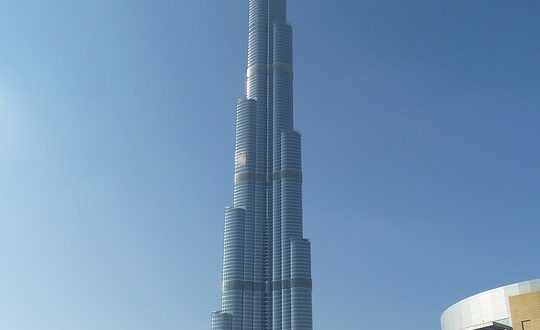The construction industry is a significant contributor to environmental degradation, consuming vast amounts of raw materials and natural resources, and generating a staggering 39% of the world’s carbon emissions as reported by the World Green Building Council. However, there is hope for a more sustainable future. Despite the numerous challenges and competing priorities, the sector is showing signs of progress toward sustainability.
A recent global survey across multiple industries revealed that executives in the engineering and construction sectors have made the most progress in the realm of sustainable design, with 47% of respondents indicating that sustainability is a major concern or top-of-mind during this phase.
Sustainable design is crucial in reducing energy consumption in completed buildings. However, the survey also highlighted that while many executives have set sustainability goals, fewer have taken concrete steps to achieve them.
The construction industry has an important role to play in creating a more sustainable future, and it is heartening to see that more and more companies are taking steps to prioritize environmental sustainability in their operations. Let’s talk about the top 5 benefits of green technology in construction:
- Reduced maintenance and costs
Green buildings are designed to optimize the use of resources such as water and energy. For instance, by utilizing task lighting strategies and maximizing natural light, green buildings significantly reduce the energy consumption of lighting systems, resulting in significant savings on water and energy bills.
Given that operation and maintenance costs can account for up to 80% of a building’s lifetime expenses, the reduction of these costs can greatly enhance the profitability of building owners who collect rent.
While the initial construction costs of green buildings may be slightly higher than their traditional counterparts, the long-term savings in operation and maintenance expenses make them a cost-effective choice in the long run.
- Improved energy efficiency
Designers of green buildings strive to minimize dependency on non-renewable energy sources such as coal. To achieve this, they incorporate renewable energy solutions such as solar panels and design the building to maximize natural light and minimize the use of artificial light.
These and other strategies ensure that the building utilizes energy in an efficient and sustainable manner. Energy efficiency not only benefits the building’s occupants but also contributes to a more sustainable future by reducing dependence on non-renewable energy sources and decreasing the environmental pollution.
- Waste reduction
Waste management is a critical aspect of green building construction and plays a vital role in achieving sustainability. Leading industry names emphasize the importance of implementing “green” strategies to not only reduce waste but eliminate it altogether.
This not only helps to conserve natural resources but also ensures compliance with federal regulations. Furthermore, implementing efficient waste management practices can lead to cost savings for the building owner and occupants, as well as reduce the environmental impact.
This can include sorting and recycling materials, composting, and implementing a zero-waste strategy. Besides, sourcing materials from sustainable and responsible suppliers, and choosing products with minimal packaging, can also help to reduce waste and promote sustainability.
- Better youth health
Another benefit of green technology in construction is better youth health. The benefits of green construction extend beyond environmental sustainability, it also positively impacts human health. The U.S. Environmental Protection Agency (EPA) recognizes the correlation between poor air quality and health issues and green construction practices have been implemented to address this.
An article by EHS Today, a workplace safety and health resource, published in August 2010, highlights the positive association between green building construction and air quality. It cites the efforts of the Lower Manhattan Construction Control Center (LMCCC) in managing construction activities in the area following the 9/11 attacks.
LMCCC’s environmental performance commitments (EPCs) which focus on reducing noise, dust, vibration, and traffic, among other things, have led to a decrease in air pollution in Lower Manhattan. LMCCC’s approach emphasizes informing residents of the benefits of construction, minimizing disruptions and protecting environmental quality, and providing avenues for continuous communication.
- Improved air quality
Air quality, both indoor and outdoor, is a critical issue that must be addressed for the well-being of individuals and the environment. One way to achieve this is by implementing sustainable building practices, which focus on optimizing energy consumption while providing comfort and reducing environmental impact. Air pollution is a global problem that can have detrimental effects on human health and the environment.
Numerous pollutants are known to cause serious health issues in humans. Climate change, brought on by environmental pollution, also contributes to the spread of infectious diseases and natural disasters.
To combat this problem, a concerted effort must be made to raise public awareness and involve scientific experts from various disciplines. National and international organizations must work together to address the threat of air pollution and propose sustainable solutions.
- Green buildings perform better
Sustainably constructed buildings, commonly referred to as green buildings, are known to perform better over time. These buildings not only save energy and reduce costs but also benefit the environment and the people who inhabit them.
Green buildings often feature superior materials and a well-constructed building envelope that helps prevent water intrusion, thereby saving energy. This results in a cascade of benefits, such as reducing the likelihood of water penetrating the envelope and causing mold issues. This not only protects the integrity of the building but also improves indoor air quality.
Closing thoughts
For homeowners, builders, and general contractors who are well-informed, the choice to go green is an obvious one. Not only do sustainable materials lead to energy and water savings, but they also enhance air quality and improve the overall longevity of a home.
Green materials such as recycled decking and roofing have been proven to be more durable and require less maintenance. Additionally, these materials often lack harmful chemical treatments, making them not only better for the environment but also healthier for the people living in the home.



